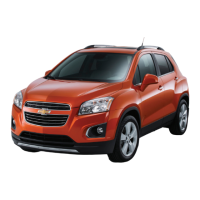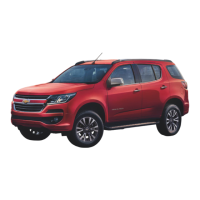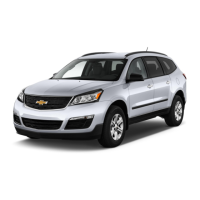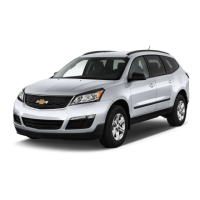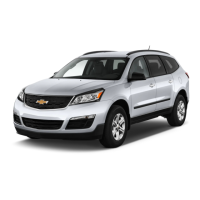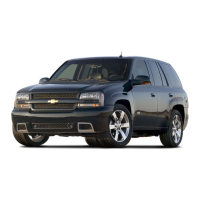
Do you have a question about the Chevrolet TRUCK 1969 and is the answer not in the manual?
| Brand | Chevrolet |
|---|---|
| Model | TRUCK 1969 |
| Category | Automobile |
| Language | English |
A comprehensive checklist for ensuring safe driving practices and vehicle condition.
Guidance on initial driving to ensure optimal future performance and vehicle longevity.
Information on ignition switch positions, key operation, and lock management.
Essential checks before starting, engine start methods, and choke usage.
Advice on starting flooded engines, checking gauges, and warming up the engine.
Procedures for operating automatic transmissions, including gear selection and braking.
Explanation of shift positions and operation for automatic and manual transmissions.
Methods for starting in emergencies and freeing the vehicle from terrain.
Instructions for engaging 4WD, using hubs, and safety warnings.
Guidelines for towing trucks, including safety precautions and drive shaft disconnection.
How positraction improves traction and associated safety advice.
Explanation of instruments and diagrams of panel layouts for different models.
Interpretation of temperature, ammeter, and generator indicator lights.
Understanding brake system warning lights, fuel gauge, and high beam indicator.
Functionality of throttle, clutch, power brakes, and lining inspection.
Self-adjusting brakes, parking brake operation, and safety precautions.
Controls for lights, beams, and acceleration.
How to use the manual choke control for engine starting.
Operation of gearshift levers and the Deluxe Air Heater system.
Using Cruise-Master and defroster for comfort and visibility.
Adjusting the system for heating, cooling, and bi-level airflow.
How to direct airflow from the central barrel-type outlets for comfort.
Instructions for operating roof AC and tips for efficient use and defogging.
How to operate the radio, tune stations, and use preset buttons.
How to lock and unlock doors from outside and inside the vehicle.
How to adjust seat position and operate air vents for comfort.
Using turn signals for turns and lane changes; hazard flasher use.
Operating wipers/washers and safety for cold weather.
Safety precautions when transporting luggage or cargo in the truck.
Proper use, adjustment, and safety of lap and shoulder belts.
Guidelines for restraining children and maintaining seat belts.
Proper use of rearview mirrors and how to adjust the interior mirror.
How to operate hood latches and the benefits of power steering.
Accessing engine components and fuel tank on forward control models.
The owner's role in maintenance and a summary of essential services.
Regular lubrication, fluid checks, alignment, and tire rotation for longevity.
Recommendations for brake service and engine oil/filter changes.
Maintenance for emissions control systems, including tune-ups.
List of parts requiring periodic replacement based on wear and usage.
Services to be performed at 6,000-mile intervals or every 4 months.
Services to be performed at 12,000-mile intervals or every 12 months.
Maintenance tasks for 24k, 30k, and 36k mile intervals.
Regular checks and specific maintenance for winter conditions.
Recommended fuel grade and advice for operating outside the US/Canada.
Guidance on oil additives and how to check the engine oil level correctly.
Recommended intervals for oil and filter changes.
Guide to oil viscosity and air cleaner care.
Operation and maintenance of PCV and AIR systems for emissions control.
CCS function, maintenance, and periodic service for cleaner air.
Specific intervals for oil and filter changes.
Guide to oil viscosity and air cleaner care.
Maintenance for PCV, AIR, tune-ups, and electrical systems.
Checking lights, signals, battery level, and safety warnings.
Maintenance for battery terminals, generator, spark plugs, carburetor, and fuel filter.
Checking fuel pump, governor, and engine oil level.
Using recommended coolant, thermostat function, and radiator cap details.
Checking Powerglide fluid level, recommended fluids, and low band adjustment.
Lubrication for THM, Synchromesh, and shift linkage.
Checking and refilling rear axle lubricant levels.
Checking and refilling front axle and transfer case lubricant.
Lubricating controls, checking brakes, and master cylinder fluid.
Factors affecting tire traction, hydroplaning, and tubeless tire checks.
Identifying tire wear and ensuring proper tire inflation.
Inflation pressure tables for various tire types and models.
Load limits for tires used as singles on different rim types.
Load limits for tires used as duals on different rim types.
Load limits for wide base tubeless tires used as singles.
Safety warning regarding tire installation on multipiece rims.
Identifying jacking points, torque specs, and wheel removal procedures.
Lubricating wheel bearings and checking clutch pedal free travel.
Checking steering gear bolts and lubricant level.
Steering gear checks and power steering fluid level.
Maintaining front end alignment and lubricating suspension components.
Torque specifications for rear suspension U-bolts.
Lubricating propeller shaft, universal joints, and pedals.
Maintenance for parking brake, body parts, and truck cleaning.
Technical data for engines, including power, torque, and oil capacity.
Coolant capacities, thermostat function, and radiator cap details.
Gear ratios and lubricant capacities for transmissions and axles.
Lamp types, fuse, and circuit breaker protection details.
Details on battery types and fuel tank capacities for various models.
Locating and interpreting vehicle serial number and model codes.
Explains the information on the service parts plate for ordering correct parts.
Lists mandatory equipment for gasoline models based on GVW rating.
Mandatory equipment for gasoline and diesel models based on GVW rating.
Information on optional tire ratings and heavy-duty chassis equipment.
A listing of zone office addresses for customer assistance.
A log for recording vehicle operating data such as mileage and expenses.





